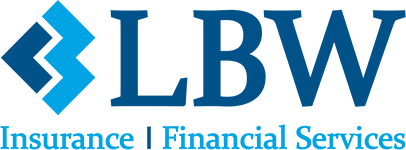In the state of California, employers are running short on time to comply with the requirement to provide a qualified retirement savings plan for their employees. Legislation passed in 2016 created CalSavers and implemented a rolling set of compliance deadlines starting with employers with 100 or more employees. Their deadline came and went on June 30, 2020. Now, all California employers with 5 or more employees must comply with this requirement by June 30, 2022.
Employers have choices
As a part of the 2016 legislation, California promised to create a public option that would give employers easy access to a qualified individual retirement saving vehicle. The program is called CalSavers and it is the default program into which all employers (with 5 or more employees) must enroll their employees if they’re not offering some other qualified plan such as a 401(k), 403(b), or a SIMPLE IRA.
To access CalSavers, employers can visit https://www.calsavers.com/
Of course, employers can opt not to utilize the CalSavers option and instead provide a private plan. 401(k), 403(b), and other qualifying plans offer distinct differences in advisory services, cost, benefits, and administrative efforts required in comparison to CalSavers.
There are penalties for not complying
For employers who fail to enroll their employees in CalSavers, or initiate a private plan, fines will be levied. Once an employer receives notice from the State, they have 90 days to come into compliance. At 90 days, if the employer has still not enrolled in a plan, then the fines will be $250 per eligible employee. At 180 days, if the employer is still not in compliance, a second round of fines will be charged at $500 per eligible employee.
Employers should take a close look at the options before making their selection
For some employers, CalSavers will suffice. There are no employer fees and no fiduciary responsibility. For enrolled savers, there’s flexibility to opt out or back in at any time. If they leave the employer, the CalSavers Roth IRA belongs to them. And for inexperienced savers, selecting investments is made very simple.
But CalSavers isn’t the best choice for all firms or all employees. For employers who are looking to compete for talent, a robust retirement saving plan may be a critical component of the overall compensation offering. Many candidates look at potential employers and expect to see 401(k) plans with an employer match. CalSavers doesn’t allow for employer contributions and the maximum contribution an individual can make in their CalSavers IRA is $6,000 per year. Conversely, the maximum contribution for a SIMPLE IRA is $14,000 and for a 401(k) it is $22,500 per year.
Another significant distinction between a 401(k) plan and CalSavers is the fact that higher compensated workers (those with a Modified Adjusted Gross Income over $129,000, or $204,000 if married filing jointly) aren’t allowed to participate in an IRA and will be responsible for opting out of CalSavers. This means the employer will be leaving its higher compensated employees without any retirement saving vehicle at all. Income limits do not disqualify an employee from a 401(k) plan.
The opportunity to make pre-tax contributions is another advantage 401(k) plans have over CalSavers. CalSavers is a Roth IRA only. This means all contributions are made with post-tax funds. With a 401(k), employers can include pre-tax and roth contribution options for employees. In addition, employers who implement a 401(k) plan and choose to contribute, will be able to deduct contributions on the company's federal income tax return - to the extent that the contributions don't exceed certain limitations.
There are also differences between CalSavers and private plans when it comes to control over what investments are offered. While CalSavers offers several investment options, its funds only represent a fraction of the open market, and the employer has no control over their selection. With a 401(k), employers, with assistance of a financial advisor, can decide which funds are offered in the plan.
One last distinction between CalSavers and other qualified options is in administration. Most private plans offer integration with payroll companies. This allows for automatic enrollments and contributions each pay period. With the CalSavers plan, employers are tasked with managing employee enrollments, contributions, changes, and other tasks directly.
With the June 30, 2022 deadline nearly upon us, many employers need to take a strategic look at this issue now. They should reach out to their CPA, a certified financial planner, a 401(k) provider, or some other financial professional to discuss which strategy is right for them. Planning and decision making are important now, before the state of California, or your own employees, demand that you act.
Kevin Durkin, AIF® is the Vice President of Employee Benefits and Qualified Plans at LBW Insurance and Financial Services. Kevin holds a FINRA Series 6 registration, Investment Co. Product/Variable Contract. CA Insurance License# 0C98002. Securities offered through Securities America, Inc. Member FINRA/SIPC. Donald L. Like and Todd J. Lerner, Registered Representatives. Advisory services offered through PFG Advisors, Donald L. Like and Todd J. Lerner, Investment Advisor Representatives. LBW, PFG Advisors, and Securities America are separate entities.

